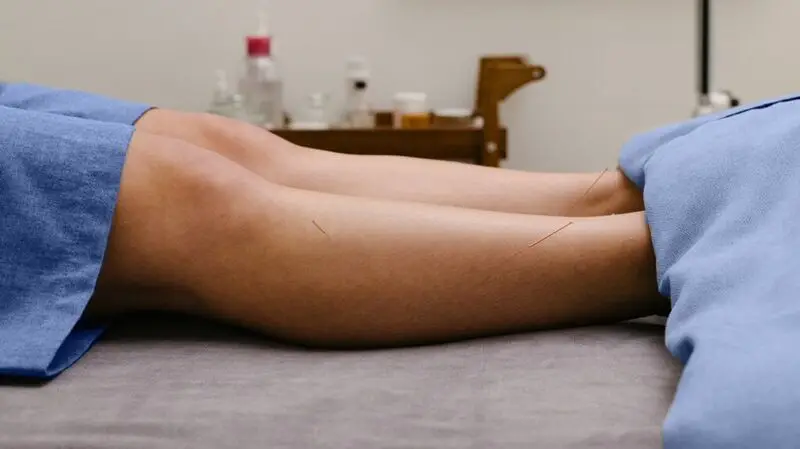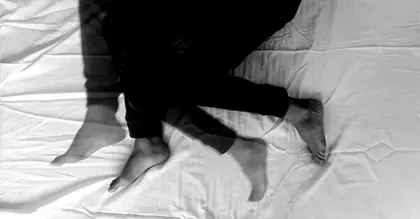
- Acupuncture successfully reduced pain and disability for people with chronic sciatica in a randomized clinical trial in China.
- Their improvement, compared to those receiving sham acupuncture, lasted for the entire 52-week trial.
- The sciatica affecting participants in the trial was the result of a herniated spinal disc.
- Acupuncture is used as a conservative treatment for sciatica worldwide, though clinical studies affirming its therapeutic value are scarce.
Leg pain and disability associated with chronic sciatica were significantly relieved by treatment with acupuncture in a randomized clinical trial compared to treatment with sham, or placebo, acupuncture.
Trial participants who received acupuncture experienced twice the reduction in pain and nearly three times the reduction in disability.
These benefits lasted the entire 52 weeks of the trial. No serious adverse events were reported for those receiving acupuncture, which took place at six hospitals in China.
Sciatica is a condition characterized by deep pain occurs in the back and/or legs. It is the result of a compressed sciatic nerve, which runs from the lower back to just below the knee.
Acupuncture is used worldwide as a treatment for sciatica, often successfully, as documented in a meta-analysis published in Frontiers in Neuroscience in 2023.
The new trial is an effort to provide clinical evidence of its efficacy. Its results appear in
For the trial, 216 individuals with chronic sciatica resulting from a herniated disc were treated either with 10 sessions of acupuncture or 10 sessions of sham acupuncture over a period of 4 weeks. Participants self-reported their conditions to assessors at weeks 2, 4, 8, 26, and 52.
The participants, outcome assessors, and trial statisticians were blinded to the type of acupuncture each individual received, although the acupuncturist themselves were not blinded.
Medhat Mikhael, MD, a pain management specialist and medical director of the non-operative program at the Spine Health Center at MemorialCare Orange Coast Medical Center in Fountain Valley, CA, who was not involved in the trial, named “spinal stenosis and degenerative spine diseases, slippage of vertebrae (spondylolisthesis), and spine tumors and cysts that pinch the nerve roots” as some of the common causes of sciatica.
Typical treatments for sciatica include physical therapy with traction, stretching exercises, and electric stimulation.
Mikhael also noted medications such as “nonsteroidal, anti-inflammatory, neuropathic pain medications, including anti-seizure medications and some antidepressants.”
“In advanced cases,” he told us, “interventions like epidural injection with steroids around the nerve roots could be a great way to control sciatica symptoms.”
“In case of failing with all of these measures, surgical intervention becomes an option through decompressing the nerve root,” added Mikhael.
Acupuncture was developed in China, with its earliest definitive appearance in the historical record occurring in 100 BCE, with hints of the conceptual system on which it is based dating back as far as 6,000 BCE.
The practice involves the shallow insertion of thin needles into the skin at key points in the human body. Acupuncture may
Mikhail said the new trial’s conclusions were not surprising to him, noting that “acupuncture is one of the conservative treatment options for sciatica in mild and early stage.”
There is, he said, an “understanding that acupuncture is effective through improving the blood flow in the area, relaxing the muscles, helping to release the natural painkillers of the body — called endorphins — and modulating the CNS [central nervous system] through increasing the release of inhibitory neuropeptides,” which decrease neuropathic pain.
In acupuncture parlance, this practice is supposed to stimulate Qi, or vital energy coursing through the body.
Speaking about the relationship between Qi and the CNS, Jason Chong — a vocational education teacher of Sciences & Allied Health in the College of Vocational Education at the Royal Melbourne Institute of Technology in Victoria, Australia, who was not involved in this study — told us that “this is perhaps one of the more complicated and highly debated topics of them all.”
“Firstly, I will go to say that Qi is not a simple substance that can be measured, such as blood volume/pressure or electrical charge. It is a concept of functional ability, perhaps closer to the idea of metabolism,” Chong noted.
However, it is not all as esoteric as it may at first seem. Chong explained that:
“Acupuncture at its core is a circulatory medicine. It releases constrictions to facilitate better flow of blood and fluids through the body. This enables better perfusion of oxygen and other nutrients, along with removal of waste products, resulting in better functional ability of the body.”
Chong noted various ways in which the CNS could be stimulated by acupuncture, including “reduced
The “sympathetic” part of the nervous system is tied to the anxiety and stress responses, while the parasympathetic part is tied to relaxation. Thus, reduced sympathetic nervous system activity, and increased parasympathetic nervous system activity could help relieve the effects of chronic stress.
Both alpha and theta brain waves are linked to relaxation, focus, and creativity, and chemical messengers like serotonin and dopamine play crucial roles in various aspects of health, including mood regulation.
The limbic system and HPA axis both also play crucial roles in stress regulation.
As for how often a person should have acupuncture to relieve sciatica pain, Chong noted that, “where conditions are more acute and there is minimal structural degradation, then a treatment course of 6–10 treatments [could] provide lasting relief.”
However, he added that: “Where there are more significant structural changes, then often more maintenance treatment is required. After an initial course of treatment, this maintenance program becomes more spaced out as the body maintains its corrections, and clients adopt better lifestyle practices.”
“The reality of modern life, though, is that many people find themselves repeatedly engaging in the activities that led to the issue in the first place despite the best advice, and so ongoing treatments are required, as with all modalities,” he cautioned.





